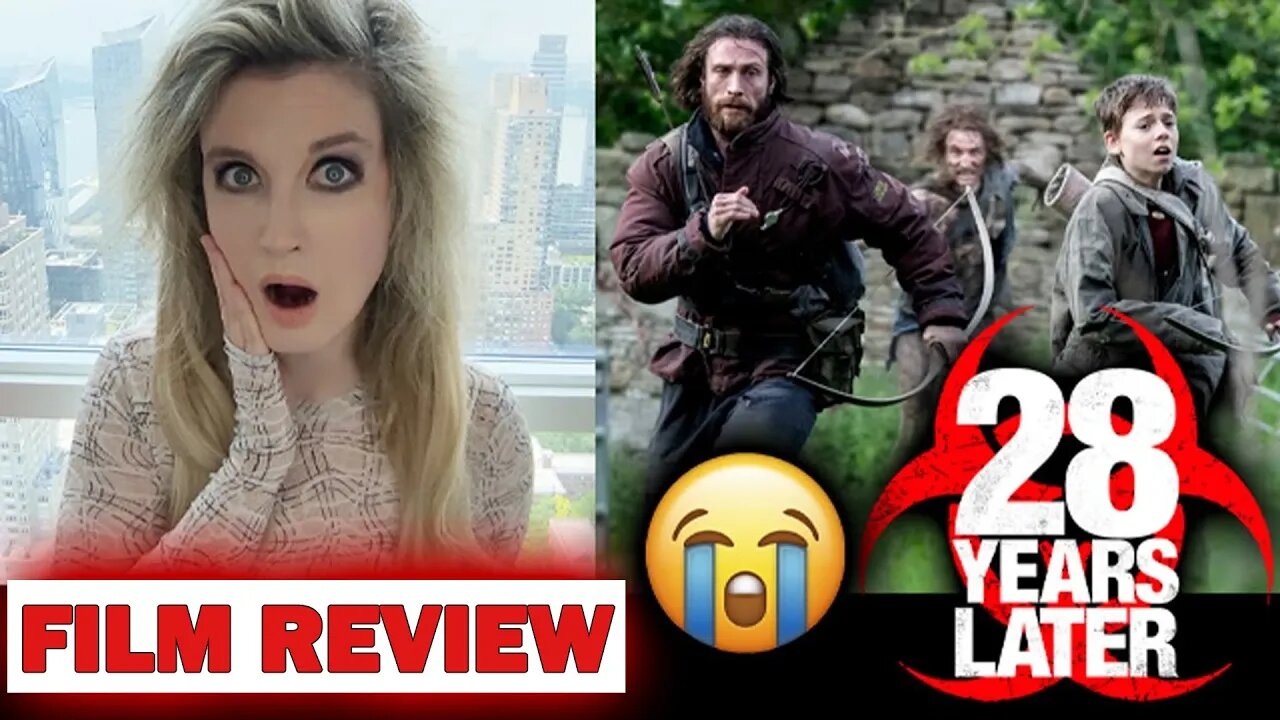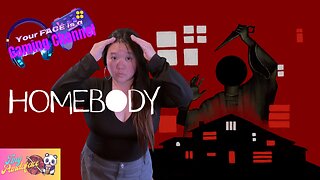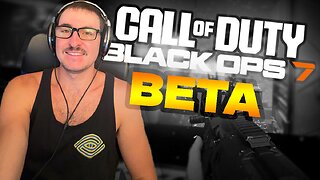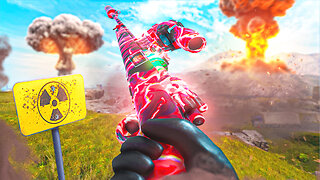Premium Only Content

28 Years Later Film Review | Danny Boyle’s Bold Sequel Explained | NEWSDRIFT
In this 28 Years Later film review, we break down Danny Boyle's daring return to the rage virus universe. Nearly three decades after the events of 28 Days Later, this powerful sequel delivers a haunting blend of horror, mythology, and emotional drama. Starring Jodie Comer, Aaron Taylor-Johnson, and Ralph Fiennes, 28 Years Later pushes the boundaries of the post-apocalyptic genre with mutated infected, shocking visuals, and a deeply human story.
Is it a worthy sequel? We cover the plot, performances, critical reception, and how it compares to the original films. If you're a fan of intense horror with deeper meaning, this review is for you.
🔔 Don’t forget to like, comment, and subscribe for more honest film reviews and movie breakdowns!
📌 Timestamps:
0:00 – Intro
0:40 – Story Overview
2:00 – Main Characters
3:30 – Visual Style & Music
5:00 – Critics' Reactions
6:30 – Final Thoughts
#28YearsLater #28YearsLaterReview #DannyBoyle #JodieComer #HorrorMovies #FilmReview #RageVirus
CNN, Fox News, MSNBC, ABC News, NBC News, CBS News, PBS NewsHour, Bloomberg News, CNBC, The New York Times, The Washington Post, NewsNation, Reuters, Associated Press, USA Today
Twenty-eight years after the rage virus first tore through Britain in 28 Days Later, director Danny Boyle returns with a bold new chapter—28 Years Later. This is not just a sequel. It’s a creative evolution of the entire franchise. And in this 28 years later film review, we’re diving deep into what makes this movie one of the most daring horror releases of the year.
The story picks up nearly three decades after the outbreak. Britain is still sealed off from the rest of the world, abandoned, wild, and mythic. In a distant corner of this decaying country, a small group of survivors clings to life on a remote tidal island. Their protection comes not from technology or walls, but from ancient customs, archery skills, and a strict isolationist code. Here, the rage virus is something almost spiritual—more legend than reality. Or so they think.
The central characters are Jamie, played by Aaron Taylor-Johnson, his wife Isla, portrayed with intense emotional depth by Jodie Comer, and their son Spike, a curious boy caught between innocence and a world teetering on chaos. Isla is sick—possibly dying—and the family’s only hope lies on the mainland. But what they find there is a world far more terrifying than they imagined.
The rage virus has evolved. No longer just fast and furious, the infected have mutated into grotesque new forms—oozing slime creatures and monstrous, alpha-like hunters. The film uses these horrifying mutations not just for shock, but to expand the mythology. The infected aren’t just zombies anymore—they're symbols of what humanity has become in isolation, fear, and decay.
Joining the cast is Ralph Fiennes as Dr. Ian Kelson, a figure of strange wisdom and quiet power. His performance anchors the story with a gravitas that feels earned, not forced. In a film filled with chaos and mutation, Fiennes offers calm in the storm—until, of course, that storm swallows him too.
But what truly sets 28 Years Later apart isn’t just the plot or performances—it’s the visual language. Boyle reunites with cinematographer Anthony Dod Mantle, and together they deliver a film that is constantly shifting its style. One moment, you’re watching handheld smartphone footage. The next, you're seeing freeze-frames of brutal kills or flashes of old stock newsreel. It’s jarring, but it works—creating an atmosphere of disorientation that matches the characters' emotional states.
The score, once again featuring music from Young Fathers, adds another layer of texture. It’s haunting, pulsing, and at times almost beautiful—an odd contrast to the violence on screen.
Critics have praised the film’s ambition. Entertainment Weekly gave it an A-minus, calling it one of the richest horror movies in recent years. Rotten Tomatoes currently shows a score around 95 percent, and Metacritic sits near 78. Not every review is glowing—the Financial Times gave it three out of five stars, citing moments where the style feels a bit too self-aware. But overall, the consensus is clear: this is not just a horror sequel. It's a cinematic experiment.
On Reddit and fan forums, the response is mixed but passionate. Some viewers love the blend of folk horror and post-apocalyptic survival. Others feel the film’s tone shifts too often—especially in the final act, which dives into philosophical territory with a dramatic flair. But even critics agree: it’s never boring.
Jodie Comer’s performance, in particular, is receiving wide acclaim. She portrays Isla not as a damsel in distress, but as a mother fueled by love and desperation. Her illness is never exploited—it’s used to explore mortality, legacy, and what it means to live when the world is broken.
-
 LIVE
LIVE
tminnzy
1 hour ago*BETA DROPS* BO7 LEVEL CAP INCREASE! OPEN BETA
62 watching -
 1:06:42
1:06:42
The White House
2 hours agoPresident Trump Delivers Remarks at Navy 250 Celebration
11.1K32 -
 LIVE
LIVE
TinyPandaface
2 hours agoYour FACE is a Gaming Channel! | Homebody
43 watching -
 3:22:43
3:22:43
Barry Cunningham
4 hours agoBREAKING NEWS: PRESIDENT TRUMP GIVES SPEECH TO THE NAVY!
45.9K30 -
 LIVE
LIVE
EyeSeeU8
1 hour ago🔴Warzone + BO7 Beta w/ EyeSeeU
24 watching -
 4:37:33
4:37:33
MattMorseTV
6 hours ago $77.95 earned🔴Trump's MAJOR ANNOUNCEMENT.🔴
68.3K146 -
 LIVE
LIVE
GritsGG
3 hours agoWarzone Win Grinding! Most Wins in WORLD! 3680+!
131 watching -
 1:10:51
1:10:51
Jeff Ahern
4 hours ago $2.59 earnedThe Sunday show with Jeff Ahern
14.4K3 -
 LIVE
LIVE
Putther
4 hours ago $0.88 earned🔴LAZY SUNDAY BOUNTY HUNTING ON GTA !!
100 watching -
 2:31:44
2:31:44
BBQPenguin_
3 hours agoThis is one of the BEST FREE TO PLAY Games!
7.67K
